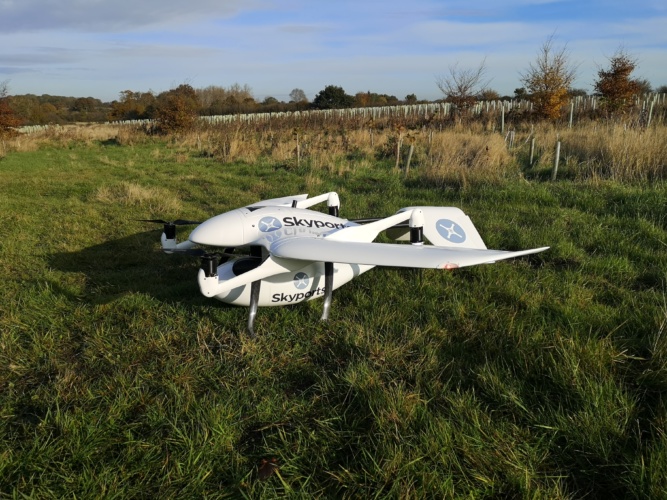
The CAA’s Regulatory Sandbox was established in 2019 to create an environment where innovation in aviation can be explored in line with its core principles of safety, security and consumer protection.
Alex Brown, Head of Operations at Skyports, explained that BVLOS UAV deliveries are already happening globally through trials and in dedicated corridors that keep UAVs away from other airspace users.
“To achieve commercial operations at scale, particularly in more congested environments, delivery UAVs will need to be able to safely share the skies with other airspace users in non-segregated airspace, which our project in the CAA Regulatory Sandbox is aiming to achieve,” he said.
To this end the London-based cargo drone deliveries specialist will work with consortium partners Iris Automation, RSK and Thales on putting a long-range Wingcopter – a fixed wing/tilt-rotor aircraft – through the Sandbox project.
San-Francisco based Iris is providing its Casia computer-vision-based Detect-and-Avoid (DAA) technology, Thales its SOARIZON mission planning and flight management system plus Drone Connect Remote ID for UAV tracking, and RSK will apply its skills and expertise in environmental assessment.
“We will be testing the use of the DAA system on our UAV initially in segregated and then in non-segregated airspace and, if everything is successful, the CAA will have a proven means of providing regulatory approval to UAS operators wishing to fly UAVs into non-segregated airspace, which is key to enabling full-scale, permanent commercial operations,” said Brown. “We plan to complete our project by summer 2020, subject to any future government rules and advice on social distancing in response to COVID-19.”
The drone package delivery market is projected to be worth £21bn by 2030. Brown told The Engineer that Skyports has multiple aircraft in its fleet that give it the flexibility to overcome various logistics and supply chain problems.
“We work with our aircraft OEMs to up-spec the aircraft to a standard where they meet the rigorous regulatory standards required to fly Beyond Visual Line of Sight in different types of environments,” he said. “This includes, for example, enhanced triple-redundant communications systems for the C2 link as well as a parachute system.”
Skyport’s fixed-wing UAV has the greatest range in the company’s fleet with the capability to travel distances of up to 100km with a maximum ceiling of 3000ft AMSL (above mean sea level), depending on the payload weight. According to Brown, this makes it an ideal platform to connecting hard-to-reach communities in more remote environments.
“As UAV regulations progress, we will begin to integrate longer distance and heavier payload UAVs, and we have already begun discussions with heavier payload UAV OEMs about taking this next step.”




Nanogenerator consumes CO2 to generate electricity
Whoopee, they've solved how to keep a light on but not a lot else.